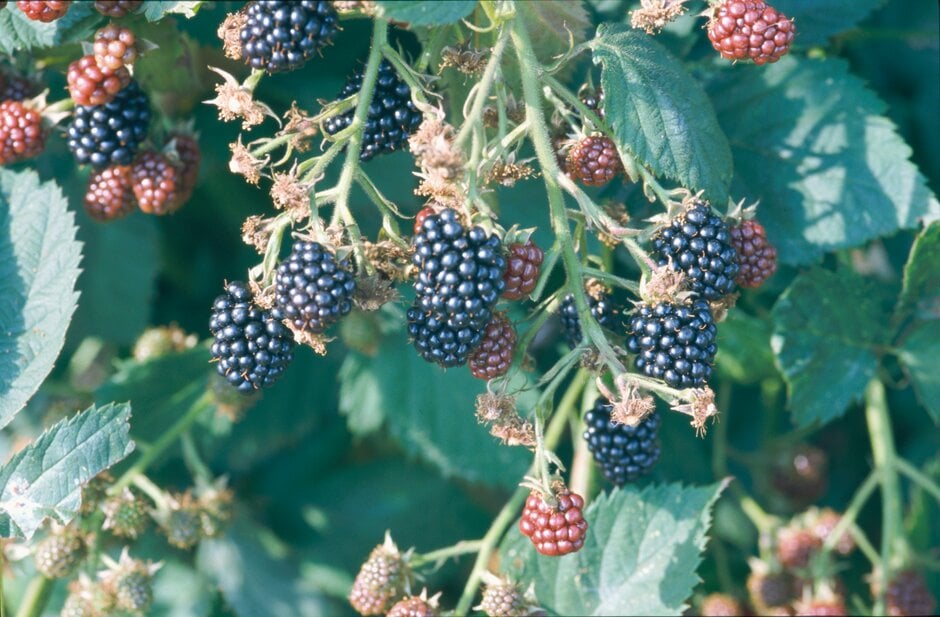Rubus fruticosus agg. 'Loch Ness' (B)

blackberry 'Loch Ness'
'Loch Ness' is a fairly compact blackberry cultivar with upright thornless canes to 2m tall. White flowers are followed by firm, glossy-black, conical fruits, with the tangy flavour of wild blackberries, with very heavy crops that can be harvested from mid August until the first frosts

Buy this plant
Size
Ultimate height
1.5–2.5 metresTime to ultimate height
2–5 yearsUltimate spread
1.5–2.5 metresGrowing conditions
Moisture
Moist but well–drained, Well–drainedpH
NeutralColour & scent
| Stem | Flower | Foliage | Fruit | |
| Spring | Green | |||
|---|---|---|---|---|
| Summer | White | Green | Black | |
| Autumn | Green | |||
| Winter |
Position
- Full sun
Aspect
South–facing or West–facing or East–facing or North–facing
Exposure
Sheltered Hardiness
H6Botanical details
- Family
- Rosaceae
- Native to GB / Ireland
- No
- Foliage
- Deciduous
- Habit
- Trailing
- Genus
Rubus can be deciduous or evergreen shrubs, often scrambling with bristly or prickly stems bearing simple, lobed, palmate or pinnate leaves and 5-petalled flowers followed by juicy, sometimes edible fruits
- Name status
Accepted
How to grow
Cultivation
Usually fan trained. Mulch with well rotted compost or manure. May have the potential to become a nuisance if not managed well. See blackberry cultivation for further advice
Propagation
Propagate by tip layering or from cuttings
Suggested planting locations and garden types
- Cottage and informal garden
- Wildlife gardens
- Hedging and screens
- Edible fruit
Pruning
Cut out old canes following fruiting and tie in new canes
Pests
May be susceptible to aphids, leafhoppers, raspberry beetle and gall mites
Diseases
May be susceptible to grey moulds and honey fungus (rarely)
Get involved
The Royal Horticultural Society is the UK’s leading gardening charity. We aim to enrich everyone’s life through plants, and make the UK a greener and more beautiful place.